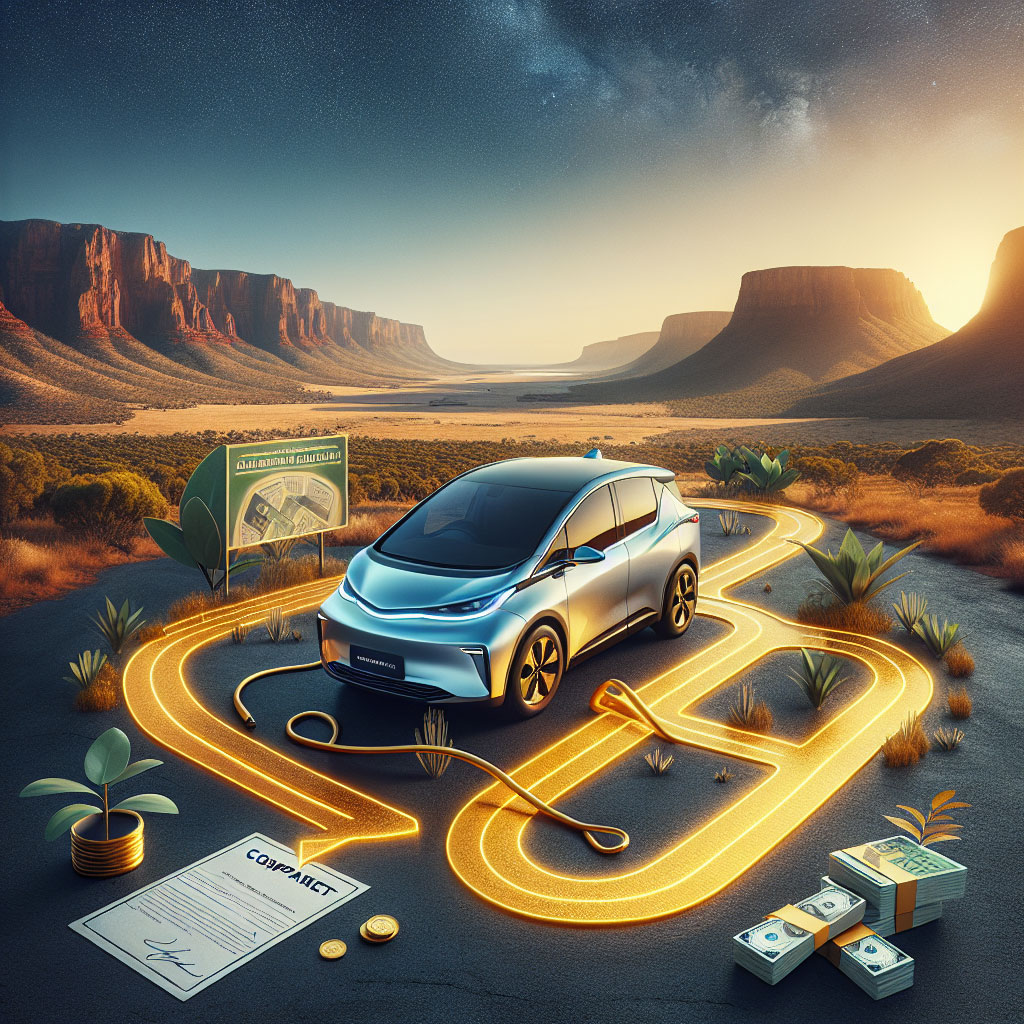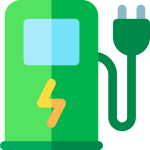
The automotive world is undergoing a seismic shift, moving away from the internal combustion engine (ICE) toward electrification. This transition, while exciting, has introduced a confusing alphabet soup of terms: BEV, PHEV, FCEV. For the average consumer looking to make a green switch, deciphering these options is the first, and often most critical, step. This article aims to clarify the differences between Battery Electric Vehicles (BEV), Plug-in Hybrid Electric Vehicles (PHEV), and Hydrogen Fuel Cell Electric Vehicles (FCEV) to help you determine which technology best fits your driving life and financial goals.
Key Takeaway for the Reader: For most consumers in 2025, a pure Battery Electric Vehicle (BEV) is the ideal switch, offering the greatest long-term savings, minimal maintenance, true zero-emission driving, and the simplest ownership experience.
1. Battery Electric Vehicle (BEV): The Pure Electric Revolution
A Battery Electric Vehicle (BEV), often simply called an EV, is the purest form of electric mobility. It runs entirely on a large rechargeable battery pack that powers an electric motor—there is no gasoline engine, no fuel tank, and therefore, zero tailpipe emissions.
The BEV Breakdown
- How it Works: Energy is stored in a large lithium-ion battery and delivered to the electric motor(s). The only way to replenish the energy is by plugging into an external power source—your home, workplace, or a public charging station.
- The Pros:
- Zero Emissions: True zero-emission driving. You eliminate your vehicle’s contribution to local air pollution.
- Lowest Running Costs: Electricity is significantly cheaper than gasoline. BEVs have minimal maintenance needs (no oil changes, fewer moving parts), leading to huge long-term savings.
- Superior Driving Experience: Instant torque provides rapid acceleration, and the silent, smooth ride is often cited as a key benefit by owners.
- Home Charging Convenience: The ability to “refuel” overnight at home is more convenient than regular trips to a petrol station.
- The Cons:
- Higher Upfront Cost: While dropping, the initial purchase price is often higher than comparable ICE or PHEV models.
- Range and Charging Time: While modern ranges exceed 400km and fast-charging is improving, long-distance travel still requires careful planning and stopping for 20-40 minutes.
- Charging Infrastructure: Access to reliable public charging, particularly fast chargers, is still developing in some regions.
Verdict: The BEV is the future, offering simplicity and maximum environmental and financial benefits. If you have reliable access to charging (especially at home or work) and your daily driving is well within the typical range, the BEV is the clear, superior choice.
2. Plug-in Hybrid Electric Vehicle (PHEV): The Transitional Compromise
The Plug-in Hybrid Electric Vehicle (PHEV) is the bridge technology, combining a gasoline (or diesel) internal combustion engine with an electric motor and a smaller rechargeable battery pack.
The PHEV Breakdown
- How it Works: A PHEV operates in two distinct modes. For short distances (typically 30km to 80km), it runs purely on the battery. When the battery is depleted or when high power is needed, the gasoline engine seamlessly kicks in. Like a BEV, it must be plugged in to maximise its electric range.
- The Pros:
- Flexibility and Zero Range Anxiety: The gasoline engine eliminates range anxiety, allowing for completely unrestricted long-distance travel.
- Electric Commuting: For drivers whose daily commute is short (the average Australian drive is about 37km), a PHEV can function as an almost pure EV, using little to no petrol on weekdays.
- Familiarity: It retains the refueling familiarity of a traditional car, making it a comfortable “dipping-the-toes” option for first-time EV owners.
- The Cons:
- Twice the Maintenance: You have two powertrains (engine and electric motor), meaning you still have oil changes, spark plugs, and all the complexity of an ICE vehicle, negating a major BEV cost saving.
- Requires Regular Plugging In: If a PHEV is not charged daily, it essentially functions as a heavier, less efficient hybrid, hauling a dead battery pack around, thus achieving poor fuel economy.
- Reduced Savings: While better than a pure petrol car, the long-term running cost savings are significantly less than a BEV.
Verdict: The PHEV is a strong choice for a very specific type of driver: one who is highly disciplined about charging and frequently undertakes long, multi-hundred-kilometre road trips with unpredictable access to charging infrastructure. For all others, it introduces unnecessary cost and complexity.
3. Hydrogen Fuel Cell Electric Vehicle (FCEV): The Long-Haul Dark Horse
Hydrogen Fuel Cell Electric Vehicles (FCEVs) are also a type of electric car, but they generate their own electricity on-board. They are often seen as a potential long-term solution for heavy transport and long-haul logistics.
The FCEV Breakdown
- How it Works: Hydrogen gas, stored in high-pressure tanks, is fed into a fuel cell stack, where it combines with oxygen from the air in an electrochemical reaction. This reaction produces electricity to power the electric motor, and the only emission is pure water vapour. They are refuelled quickly (in about 3-5 minutes) at a dedicated hydrogen pump.
- The Pros:
- Fast Refuelling: Refuelling is comparable to a gasoline car—a major convenience for high-mileage drivers.
- Long Range: Current FCEV models offer a range comparable to a full tank of petrol (up to 650km).
- Lower Vehicle Weight: The fuel cell and tanks are generally lighter than the massive battery pack of a long-range BEV, a key advantage for commercial trucking.
- The Cons:
- Non-existent Infrastructure: Public hydrogen refuelling stations are extremely rare, currently limited to a handful of demonstration sites across the country.
- High Energy Inefficiency: The process of producing, compressing, transporting, and storing hydrogen is far less energy-efficient than simply charging a battery from the grid.
- High Cost and Limited Availability: The initial purchase price is very high, and FCEVs are currently only available to selected business fleets for trial purposes, not the general public.
Verdict: For personal car ownership in 2025, the FCEV is a theoretical option, not a practical one. It is a technology for the future of heavy transport and commercial fleets, not for the everyday consumer.
The Final Decision: What’s Right for You?
Choosing an electric vehicle is less about comparing technologies and more about honestly assessing your driving habits and your access to charging.
| Driver Profile | Best Choice | Rationale |
| The Daily Commuter (Most People) | BEV (Battery Electric Vehicle) | You have reliable home or workplace charging, and your daily travel is predictable. The BEV offers simplicity, maximum long-term financial savings, and true zero-emission motoring. |
| The Long-Trip Planner | PHEV (Plug-in Hybrid) | You live in a remote area, lack charging access, or frequently drive long, interstate distances with no guaranteed public chargers. The PHEV provides the electric benefits for daily life with the gasoline backup for the true long haul. |
| The Commercial Fleet Operator | FCEV (Hydrogen) | Your needs involve consistent heavy loads, long distances, and minimal downtime (e.g., trucks, buses). The fast refuelling and reduced vehicle weight make FCEVs a potential solution, but this is an industry decision, not a consumer one. |
The Modern Reality: With BEV ranges improving rapidly, charging times decreasing, and government incentives growing, the need for a “backup” engine (the PHEV) is diminishing every year. While a PHEV offers a valuable stepping stone for some, the pure BEV represents the best investment for the vast majority of drivers. It is the simpler, cleaner, and ultimately, more cost-effective path to electric vehicle ownership. Don’t let the alphabet soup confuse you—for a cleaner, smarter, and cheaper commute, the BEV is the answer.
FAQs
What is range anxiety and do I really need to worry about it?
Range anxiety is concern about running out of charge. For most Australians with home or workplace charging, it is minimal. Long-distance trips require some planning, but expanding fast-charging networks are steadily reducing these constraints. Match vehicle range to your typical longest trip for peace of mind.
How long do EV batteries last and what about degradation?
Modern EV batteries are engineered to last many years. Manufacturers commonly offer warranties of 7-10 years or a specified kilometre limit against excessive capacity loss. Real-world degradation varies with climate, charging habits and usage, but many older EVs retain useful capacity for a decade or more.
Can I install a home charger if I live in an apartment?
Apartment dwellers face more challenges but options exist: talk to your building manager about installing shared chargers, explore government or private charging solutions for multi-dwelling buildings, or use local public charging where practical. Policy initiatives are increasingly targeting apartment charging rollout.
Are PHEVs a good compromise if I’m not ready for a full BEV?
A PHEV can be a pragmatic transitional choice if you routinely drive long distances and lack reliable access to charging. However, real-world benefits depend on disciplined charging; if you rarely plug in, a PHEV’s efficiency and emissions advantages are greatly reduced.
Is hydrogen a viable option for private car buyers in Australia?
Not yet for most private buyers. Hydrogen refuelling infrastructure is limited and the cost of green hydrogen production remains high. FCEVs are more relevant for specific commercial and heavy-duty applications at present.
How can I find out about incentives or rebates where I live?
State and territory policies vary and change over time. Check your state government’s transport or environment websites and consult vehicle dealers for the latest information. Local councils and utilities may also offer support for home charger installation.
About EV Evolution
EV Evolution is the leading online platform dedicated to Australian electric vehicle owners and enthusiasts. We foster a vibrant community, delivering essential EV news and insights, and enhancing user engagement through our innovative, AI-powered chatbot for dynamic discussions. Our mission is to empower Australian electric vehicle owners and enthusiasts by fostering a vibrant, AI-driven online community that connects, informs, and advances the nation’s electric vehicle landscape.




